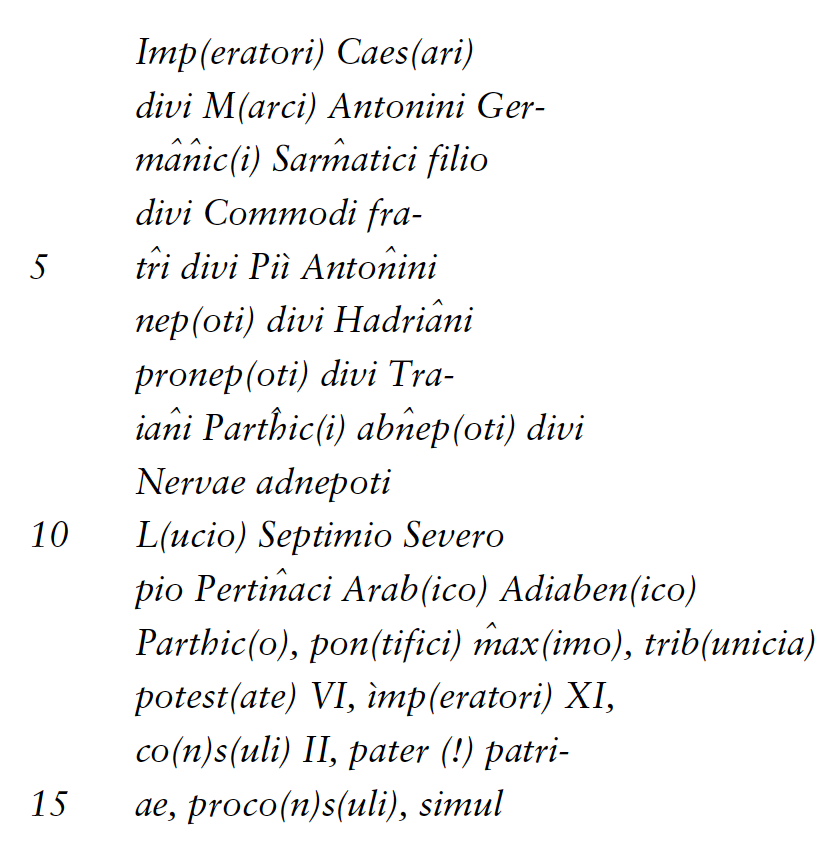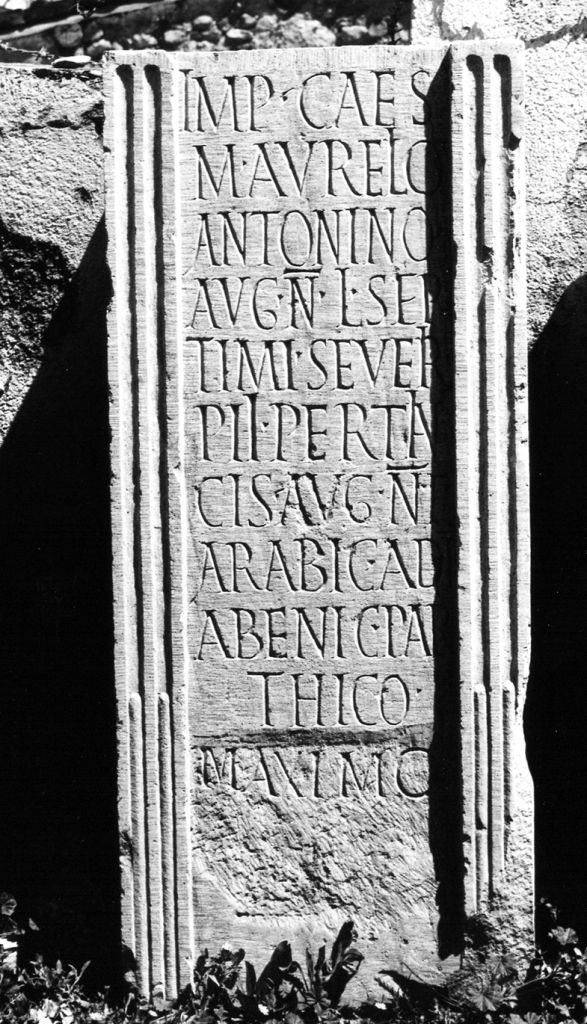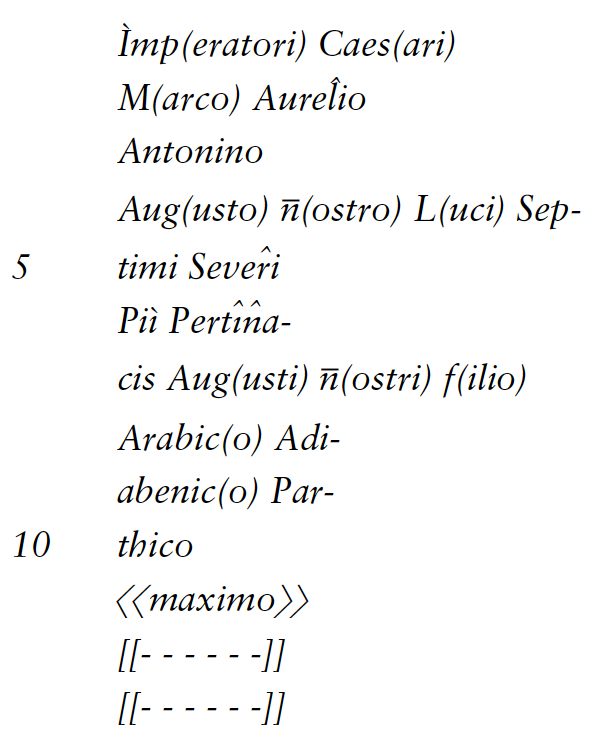In this day and age, ancient inscriptions are seldom preserved in their original context. Moreover, the monument itself might be damaged or incomplete, so that an object that was on display outside the Museum of Lambaesis without any indication of its origin must first find its archaeological and historical context (photos by H.-G. Kolbe in 1966).
Ideally, the text and the execution of the monument provide us with suitable clues for a contextualization; and a comparison with the local epigraphy of the same time horizon may even permit a historical classification – especially when it is an imperial inscription, as in this case.
The hitherto unpublished inscription, which is presented here, seems to be without any loss of text; framed by fluted pilasters, the inscription field is completely preserved. The monument, however, lacks a crowning at the top and a base at the bottom as well as the statue, that once was placed on it. The inscription is executed in well-proportioned, elongated letters, the decorative ligatures, excess lengths of the letters T and I longae as well as comma-shaped punctuation underline the elegant character of the lettering, which is oriented towards the scriptura actuaria. The first line in larger letters catches the eye with the beginning of the emperor’s name, and so does the 10th line with its continuation after the long fictitious line of ancestors (v. 2-9), as it is quite common for inscriptions of the Emperor Severus.


To the Emperor Lucius Septimius Severus Pertinax (with the victorious surnames) Arabicus, Adiabenicus, Parthicus, son of the deified Marcus Antoninus Germanicus Sarmaticus, brother of the deified Commodus, grandson of the deified Pius Antoninus, great-grandson of the deified Hadrian, great-great grandson of the deified Traianus Parthicus, great-great-great grandson of the deified Nerva, the greatest priest, in possession of the tribunal power for the sixth time, for the eleventh time proclaimed emperor, consul for the second time, father of the fatherland, proconsul; at the same time…
An almost identical dedication to the imperial family from exactly the same time and location (CIL VIII 2550 = 18045) makes us think also in this case of a multi-part presentation and hence of a more extensive text. For in the inscription, we do not only miss the sons of Severus and Iulia Domna, but also a high-ranking dedicant figure such as Q. Anicius Faustus, the governor of the province of Numidia in AD 197/198, who is known from many inscriptions of Severian times in Lambaesis: “In African epigraphy, Quintus Anicius Faustus has only emperors and gods as rivals in frequency of attestation” (P. I. Wilkins).
However, there is nothing spectacular in this dedication to Severus: the fictitious line of ancestors back to Nerva is well known from other inscriptions of this emperor, and also the elements of his titulature are confirmed by coins and other inscriptions: They lead to a dating at the end of AD 197 or most likely to the beginning of 198, since Severus took over the tribunicia potestas for the sixth time on 10 December AD 197, but in this inscription he is not yet called Parthicus maximus – a title which he held after the celebration of the Victoria Parthica in Rome on 28 January AD 198.
This honorary monument was thus set up at a time when Severus was still in Syria; and certainly the Emperor’s victory over the Parthians was the reason for this honour, though: anticipating the celebration of Victoria Parthica, it was set up in January and probably encompassed the imperial family as a whole. It is thus one of many honours that the Severian family received from the military stationed in Lambaesis during this time. Surprising because singular – and treacherous – is the word SIMVL at the end of the inscription, connecting two parts of one text and thus demanding a continuation of the inscription, that is: with the emperor himself, both his sons and Iulia Domna must have been honoured “at the same time”. We can recognize the continuation of this text in an inscription for Caracalla, which also comes from the military camp in Lambaesis and which shows the same fluted pilasters as its framing. This unpublished inscription reads as follows:


To the emperor Marcus Aurelius Antoninus, our Augustus, son of Lucius Septimius Severus Pius Pertinax, our Augustus, (with surnames) Arabicus, Adianbenius, Parthicus <maximus> …
M. Aurelius Antoninus, that is Caracalla, appears in this inscription as Parthicus maximus – however, one can clearly see that maximus was added later in clumsy writing on the erased field as the last word – an addition pointing to the time after the death of Severus (Feb. 4 in AD 211), when Caracalla officially bore this title. There is no reason why the inscription for Caracalla should not be seen as part of an ensemble erected in January AD 198 in honour of the imperial family and in recognition of the conquest of Ktesiphon. It is thus a further testimony to the many honours bestowed upon the Severian House in Lambaesis after the Parthian War.
Bibl.: On the fall of Ktesiphon and the Second Parthian War see Z. Rubin, Chiron 5, 1975, 419-441.